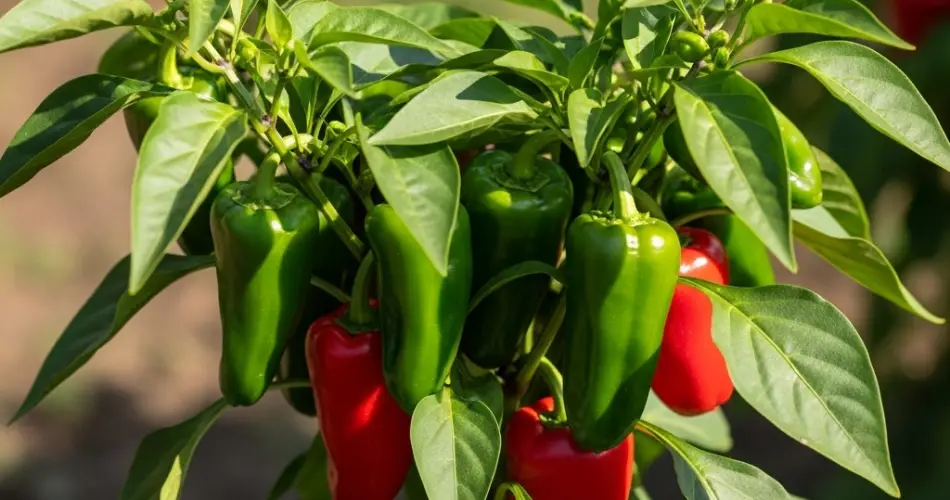Growing healthy, productive pepper plants can sometimes be challenging, especially when plants suffer from broken branches or stress caused by environmental factors. However, using the right fertilizer and care techniques can help your pepper plants not only recover from damage but also produce an abundant harvest.
This article explores how a targeted fertilizing approach strengthens pepper plants, promotes vigorous growth, and maximizes fruit yield—even if your plants have experienced broken branches or other setbacks.
Why Fertilizer Matters for Pepper Plants
Peppers are nutrient-hungry plants that need a balanced supply of essential minerals to grow strong stems, healthy foliage, and plenty of fruit. When branches break—due to wind, heavy fruit loads, or accidental damage—the plant needs extra support to heal and redirect energy toward new growth.
Using the proper fertilizer encourages:
-
Stronger stem and branch regeneration
-
Enhanced root development
-
Increased flowering and fruiting
-
Overall plant resilience against stress
Understanding Pepper Plant Nutrition
Peppers require a mix of macronutrients and micronutrients to thrive:
-
Nitrogen (N): Supports leafy growth and branch development.
-
Phosphorus (P): Encourages strong root systems and flowering.
-
Potassium (K): Essential for fruit development and disease resistance.
-
Calcium and Magnesium: Help strengthen cell walls, reducing branch breakage.
-
Trace elements such as iron, manganese, and zinc are also important for metabolic functions.
A fertilizer balanced in these nutrients, or one specifically formulated for peppers or vegetables, can make a big difference in plant recovery and productivity.
Choosing the Right Fertilizer for Peppers
For repairing broken branches and encouraging fruiting, look for a fertilizer with a slightly higher phosphorus and potassium ratio compared to nitrogen. Excessive nitrogen can lead to lush foliage but fewer fruits, while phosphorus and potassium support blooms and fruit development.
Recommended fertilizer types:
-
Balanced NPK fertilizer with ratios like 5-10-10 or 10-20-20.
-
Organic fertilizers rich in bone meal, compost, or seaweed extract.
-
Calcium supplements such as gypsum or crushed eggshells to reduce branch breakage and blossom end rot.
-
Liquid fertilizers for quick nutrient uptake during recovery.
How to Apply Fertilizer to Fix Broken Branches and Promote Fruit
-
Assess Plant Damage
Carefully prune any severely damaged or hanging branches to redirect the plant’s energy to healthy growth. -
Apply Fertilizer to the Soil
Use granular or liquid fertilizer around the base of the plant, following label instructions for dosage. Ensure the soil is moist before application to prevent root burn. -
Foliar Feeding for Faster Response
Applying a diluted liquid fertilizer directly on leaves allows faster absorption of nutrients, giving the plant a quick boost to heal broken branches and grow flowers. -
Supplement with Calcium
If you notice frequent branch breakage or blossom end rot, supplement the soil with calcium-rich amendments. This strengthens the plant’s structure over time.
Additional Tips to Support Pepper Plant Recovery
-
Stake or Cage Plants: Supporting plants physically helps prevent further breakage from wind or heavy fruits.
-
Consistent Watering: Peppers need steady moisture, but avoid waterlogging, which can stress roots.
-
Mulching: Helps retain moisture and regulate soil temperature.
-
Avoid Overfertilizing: Excess fertilizer, especially nitrogen, can cause weak, floppy growth prone to breakage.
-
Pest and Disease Control: Healthy plants recover faster. Keep an eye out for pests like aphids or diseases like powdery mildew.
Boosting Fruit Production After Damage
Once your pepper plants begin to recover, focus on encouraging flowering and fruit set:
-
Remove any dead or yellowing leaves.
-
Pinch off early flowers if the plant is still small to allow energy for growth.
-
Continue regular fertilizing every two weeks during the growing season.
-
Ensure peppers receive at least 6 hours of direct sunlight daily.
The Results You Can Expect
By using the right fertilizer and care, pepper plants damaged by broken branches will:
-
Develop stronger, more resilient stems.
-
Produce more flowers and fruits.
-
Recover faster and continue growing vigorously.
-
Withstand environmental stress better in the future.
Conclusion
Broken branches don’t have to mean the end for your pepper plants. With proper fertilization and care, you can help your plants heal, grow strong again, and yield a plentiful harvest. Choosing the right balance of nutrients—especially phosphorus, potassium, and calcium—is essential to repair damaged tissues and promote fruiting.
By supporting your peppers with targeted fertilizer applications, staking, and consistent watering, you can transform stressed plants into flourishing, productive ones. Try these techniques this growing season and enjoy the benefits of healthy, bountiful pepper harvests.



